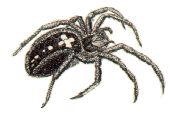Pajek datasets: ESNA 3 networks
from the book Wouter De Nooy, Andrej Mrvar, Vladimir Batagelj: Exploratory Social Network Analysis with Pajek; Revised and Expanded Third Edition for Updated Software. CUP, 2018.
Creative Commons Attribution-NonCommercial-ShareAlike 4.0 License
Visiting ties among families in Turrialba, Costa Rica, 1948
Datasets
Attiro; SanJuanSur
Description
- attiro.net: 60 vertices (families), 161 arcs (visiting relations), line values (1 - ordinary visits, 2 - visits among kin, 3 - visits among ritual kin), no edges, no loops.
- attiro_grouping.clu: ethnographic classification into six family-friendship groupings (class numbers 1 to 6).
- triad_dir.net: directed triad, 3 vertices, 6 arcs, no loops
- triad_undir.net: undirected triad, 3 vertices, 3 edges
- attiro.paj: Pajek project file containing the visiting network, triads, and partition for Attiro.
- sanjuansur.net: 75 vertices (families), 199 arcs (visiting relations), line values (1 -ordinary visits, 2 - visits among kin, 3 - visits among ritual kin), no edges, no loops.
- sanjuansur_grouping.clu: ethnographic classification of the families in SanJuanSur.net into nine family-friendship groupings (class numbers 1 to 9).
- sanjuansur_deathmessage.net: 75 vertices, 198 arcs (visits for announcing a death), no edges, no loops.
- sanjuansur_deathmessage.clu: ethnographic classification of the families in SanJuanSur_deathmessage.net into nine family-friendship groupings (class numbers 1 to 9).
- sanjuansur.paj: Pajek project file containing the networks and partitions for San Juan Sur.
- exerciseii.net: exercise network, 49 vertices, simple undirected
Download
Attiro complete dataset (ZIP, 7KB); San Juan Sur complete dataset (ZIP, 11KB)
Background
In 1948, American sociologists executed a large field study in the Turrialba region, which is a rural area in Costa Rica (Latin America). They were interested in the impact of formal and informal social systems on social change. Among other things, they investigated visiting relations between families living in haciendas (farms) in a neighborhood called Attiro. The network of visiting ties is a simple directed graph: each arc represents “frequent visits” from one family to another. The exact number of visits was not recorded. Line values classify the visiting relation as ordinary (value one), visits among kin (value two), and visits among ritual kin, i.e., between god-parent and god-child.
The investigators proposed an ethnographic classification of the families into six family-friendship groupings on substantive criteria. In rural areas where there is little opportunity to move up and down the social ladder social groups are usually based on family relations. Similar data are available for another village in the same area: San Juan Sur. In addition, for San Juan Sur, a network is available with the arcs representing the answers of the (head of) families to the question: “In case of a death in the family, whom would you notify first?”. In this file (SanJuanSur_deathmessage.net), the coordinates of families correspond with the locations of families in the original sociogram drawn by the researchers.
References
- Charles P. Loomis, Julio O. Morales, Roy A. Clifford & Olen E. Leonard, Turrialba. Social Systems and the Introduction of Change (Glencoe (Ill.): The Free Press, 1953): p. 43 (Attiro), 45 and 78 (San Juan Sur).
- W. de Nooy, A. Mrvar, & V. Batagelj, Exploratory Social Network Analysis with Pajek (Cambridge: Cambridge University Press, 2004), Chapter 3.
History
- Original author: Charles Price Loomis (1905-1995).
- Data collected and translated into Pajek data files by W. de Nooy, 2001 (San Juan) and 2003 (Attiro).
